Spice and Wolf along with Eureka Seven and Inuyasha helped me through some difficult times in my mid-20s, so they retain a place in my best anime lists. I, like many others, was excited when I heard Spice and Wolf was going to get a reprise. Spice and Wolf: Merchant Meets the Wise Wolf follows the light novels closely and, at least for the first 25 episodes, hits my expectations. Inevitably, Merchant Meets the Wise Wolf will be compared to the original anime. While I’m fond of the original and the reprise has some animation problems, the reprise is superior. First, Merchant Meets the Wise Wolf‘s art style captures the softness and storybook feel of Ju Ayakura’s illustrations in the light novels. Both anime versions rely heavily on earth tone colors, but Merchant Meets the Wise Wolf pulls the tones off a little better. The world feels old and a little dusty. I was pleased to J. Michael Tatum return to voice Kraft Lawrence and Brina Palencia return to voice Holo. While the Japanese voice actors (Jun Fukuyama as Lawrence and Ami Koshimizu as Holo) do an excellent job, with Tatum and Palencia better capture the voices for Lawrence and Holo for me. Palencia has a smokiness to her voice that works well for Holo’s character. Whereas, Ami Koshimizu remains a bit too girlish. There’s nothing wrong with Koshimizu’s depiction of Holo; Palencia’s performance better matches my interpretation of Holo’s voice from the novels. Both pairs of actors have a verbal chemistry which works well for the story. Spice and Wolf rests on the banter between Lawrence and Holo.
Spoilers ahead.
Merchant Meets the Wise Wolf is a journey story. Lawrence works as a traveling merchant, moving from town to town, buying and selling various goods. He aims to earn enough money to establish his own shop in a town someday with a goal to marry and raise a family. Holo is a wolf harvest deity who had promised to help the town of Pasloe with its wheat harvests a long time ago. But advancements in agriculture had replaced the town’s need for her. Human memory also relegated her to little more than a legend. Lawrence visits the town to trade during the harvest festival. Holo jumps from the wheat in the field–she lives within wheat–to sheaves of wheat Lawrence has in his cart. After proving she’s a deity rather than someone possessed by a devil, Lawrence agrees to help her return to her hometown of Yoitsu in the north. Holo, in return, offers her centuries of knowledge and experience to help him increase his profits. Along the way, Lawrence and Holo fall in love with each other. Their relationship forms the centerpiece of the story. As a journey framework, each destination features a different economic problem which challenges Lawrence and Holo’s relationship, ultimately pushing them closer to each other. Merchant Meets the Wise Wolf has little action, opting instead to focus on fantasy equivalents of real-world economic problems, such as currency devaluation, leveraged (and poisoned) credit, market crashes, and other trade. The premise isn’t for everyone because the economics can get esoteric and tangled, but Holo and Lawrence’s relationship and banter saves the audience from the tangle strangling them. You don’t have to understand the economics to enjoy the story. Lawrence and Holo have some of the best banter in anime. The story hints at a lot of larger events swirling around Lawrence, Holo, and the supporting cast. These larger events influences them indirectly. Currency devaluation, which is just another phrase for inflation, for example, would make goods more expensive and destabilize the region. Some of the arcs come from Lawrence’s own greed. When he–or rather Holo– catches a merchant trying to fleece him, he leverages the man for a huge amount of credit. Lawrence uses that credit to buy armor which, unknown to him, had suffered a drop in market value. The fleecing merchant then sells Lawrence’s debt to a trading house that had lost most of its assets in the market drop–the same trading house Lawrence is going to sell the armor to. As a result, Lawrence goes bankrupt because, not only has his goods become less valuable, his leveraged debt stands far beyond that value. If he hadn’t leveraged his debt, he would’ve taken a loss, but it wouldn’t have caused his bankruptcy. And all of this is caused, behind the scenes, by the Church.
The Church, which is the fantasy stand-in for the Catholic Church, is an ever-present force. Lawrence and Holo don’t have direct dealings with the church beyond dealing with some backwoods priests and bishops, but the Church’s influence hovers like the Sword of Damocles in the background. If Lawrence and Holo are caught by the Church, both will be executed: Lawrence as a heretic and Holo as a demon. Merchant Meets the Wise Wolf has a world divided among people who worship deities like Holo and the Church which worships their one god. When there isn’t war between the two factions, there’s an uneasy truce with Church members and pagans trading and interacting at their own risks. The Tereo story arc points to this. Tereo is a village the worships a snake deity but remains economically and politically protected thanks to the efforts of the deceased Father Franz who had negotiated with the nearby bishopric in favor of Tereo. Lawrence and Holo enter into the town with the lead that Father Franz had books that may offer information about Holo’s home. Holo’s home had been, according to legend, destroyed by a creature known as the Moon-Hunting Bear. Their entrance into the town happens just as Father Franz’s agreement begins to fall apart. Tereo offers a case study of how the Church and the old-world interact in an uneasy way and illustrates how powerful the Church had become. The Tereo arc illustrates how Holo had played her harvest deity role at Pasloe. Elsa was raised by Father Franz and worked to succeed him at Tereo’s church. But Father Franz’s collection of stories and witnessing Holo’s true form shakes her faith in the One God. During a scene, she and Evan, her love and Tereo’s miller, looks to Holo for guidance. And, despite how Holo dislikes being labeled as a deity, Holo acts as one and points Elsa toward finding her own answer. Lawrence provides similar guidance for Evan who goes off after Elsa. Once they leave, Holo lashes her anger and loneliness at Lawrence. Acting as a deity reminds Holo how alone she feels and how she failed to be around to stop the apparent destruction of her home. When the Moon-Hunting Bear attacked, Holo was already on her journey south.
Loneliness threads throughout Merchant Meets the Wise Wolf. Lawrence, as a traveling merchant, feels lonely as he moves from town to town, making few true friends, and never staying for long. Part of Lawrence’s character growth comes from realizing he does have friends, such as Mark Cole (who is a wonderful character) in the town of Kumersun. Holo’s loneliness comes from her powers and long life span. Merchant Meets the Wise Wolf doesn’t show this part of her loneliness as directly as the original anime. In the original, Holo has a dream where she sees Lawrence becomes a pile of bones in the snow. Merchant Meets the Wise Wolf has her elude to this fear several times along with Holo’s painful acceptance of this fact. Her acceptance drives Holo to treasure each moment she shares with Lawrence. She lives with gusto because she knows the moments do not last, even in her long, long life, and as a way to avoid the loneliness she feels. Of course, the story remains lighthearted and doesn’t dwell on this for long. But this strengthens the scenes where Holo opens this fear to Lawrence and his reciprocation. Neither Lawrence nor Holo are the high-school rom-com protagonists anime teems with. There’s no “will they won’t they” dynamic beyond the first and second arc. We know Holo and Lawrence share feelings with each other through their mutual teasing and trying to one-up each other and through their moments of snuggling. Merchant Meets the Wise Wolf uses a frame story that has Holo accounting the narrative to a young girl. Even if you haven’t read the novels, it’s easy to deduce that Holo speaks to her daughter and that Lawrence is the father. The how matters more than the if. Lawrence and Holo are pretty handsie as anime goes! But they are mature characters who accept each other and admit their mistakes to each other eventually. Their mutual loneliness plays a role in drawing them together at first, but their respect for each other holds them together. Merchant Meets the Wise Wolf shows how difficult it is for even mature people to open to each other. Holo and Lawrence sometimes spend days and even weeks traveling between locations. If you don’t keep this in mind, and the narrative only alludes to this fact a few times, their relationship can seem a little fast, especially during the first and second arcs. A lot of time passes while on the road.
The world of Merchant Meets the Wise Wolf feels alive. Events happen beyond Lawrence and Holo’s awareness. That is, until those events impact them. And we get to see slices from every social class of the world, from the shepherd Norah who works for the Church and the farmers of the countryside to rich businessmen at the head of powerful trade organizations backed by even richer nobility. All the different currencies and goods Lawrence mentions implies various city-state power dynamics that, while not really important for the story, add more world-building flavor.
I was pleased to see Holo and Lawrence’s attempts to one-up each other in the novels carried over to the anime. A few times Lawrence answers Holo’s bait with silence, seemingly ignoring her, which is a point of banter on its own. These scenes are well done but might be confusing for those who are used to their more direct ripostes. I’ve noticed over the years that many people have lost the ability to read subtle cues or layered meanings. I wrote about this problem in the context of The Legend of Zelda: Breath of the Wild’s storytelling: how many couldn’t see the story because it wasn’t spoonfed. Spice and Wolf relies on the reader and the watcher to piece together Holo and Lawrence’s intent for much of their banter. Merchant Meets the Wise Wolf also compresses some of the duller scenes that the original anime spent time upon, such as when Lawrence explains the different coinage to Holo. By cutting scenes like that down, the anime gains more time to address the better moments of banter within the novels. When adapting a novel, a movie or a series has to make choices about what to include, what to truncate, and what to cut. Merchant Meets the Wise Wolf makes good choices overall.
Holo’s sudden appearance changes the trajectory of Lawrence’s life. She plunges him into adventure, trouble, and romance. Holo’s appearance follows a common anime trope: the appearance of a mysterious girl forever changes the male protagonist’s life. This trope originates with myths and folktales. Considering Holo acts as a harvest deity, this callback helps ground Spice and Wolf as a modern myth. Lawrence, however, equally acts as Holo’s “Call to Adventure.” She chooses him by jumping into the wheat in Lawrence’s wagon. She also chooses him to be her companion and otherwise shows her agency throughout the story. Many mysterious girls act as catalysts or as projections for male desires. Lawrence and Holo begin as equals from the beginning, acting as mutual calls to adventure. Their relationship grows into mutual trust and support instead of the codependency so often seen in romance.
Holo’s nudity remains true to her character instead of devolving into fan-service. The comfort she has with her nakedness in front of Lawrence adds to her mysteriousness, contrasts against the usual anime fare, and acts as a part of her character development. As the story progresses, she doesn’t flaunt her body as often as in the beginning because she gradually leaves her animal-nature aside. She strips only when she must transform into her wolf form. This represents how she acclimates to the human world. And while Lawrence admires her body, those scenes lack the usual uncomfortable “fan-service gaze” so often found in anime. Usually the female character doesn’t want such attention and the male character looks on with teenage horny lewdness. Holo welcomes Lawrence’s gaze, and while he is attracted to her, Lawrence looks with respect for who Holo is. There’s no voyeurism here, which removes most of the fan-service element from these scenes. Fan-service, in other words, isn’t the main intent. Rather, later scenes of nudity depict a warmth between Holo and Lawrence and show how Lawrence appreciates and accepts (or rather comes to accept over the course of the story) Holo’s wolf nature. Nudity doesn’t have to be handled as fan-service; it can be a method of showing character development. It can even retain a little titillation, which these scenes do retain because of Lawrence and Holo’s emotional closeness.
I’m not one who focuses too much on opening or closing themes in an anime. Merchant Meets the Wise Wolf’s themes capture the lighthearted nature of the story well. I prefer the original anime’s sadder, more reflective themes like Tabi no Tochuu, but I also prefer sadder music. Because Merchant Meets the Wise Wolf doesn’t dwell as long on the elements of loneliness, sadder openers wouldn’t be as appropriate. The novels themselves aren’t as reflective as the original Spice and Wolf anime.
Merchant Meets the Wise Wolf hits the same notes and all the main plot points of the light novels. I enjoyed the return of Holo and Lawrence, and I hope the anime will be able to see the series to its end. At least, to the end of the first novel series. Merchant Meets the Wise Wolf has animation problems, and touches of dialogue has been changed which makes the scenes flow a little awkwardly compared to the original and the novels. Fans of the novels may not like some of the scene compressions and omissions. But I plan on purchasing the physical media of the series when it releases. I rarely purchase anime. Merchant Meets the Wise Wolf is one series that has a reserved place on my shelf.
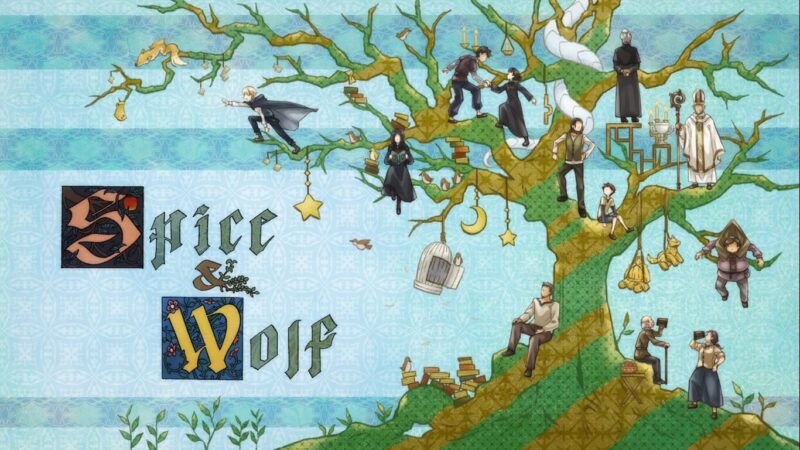
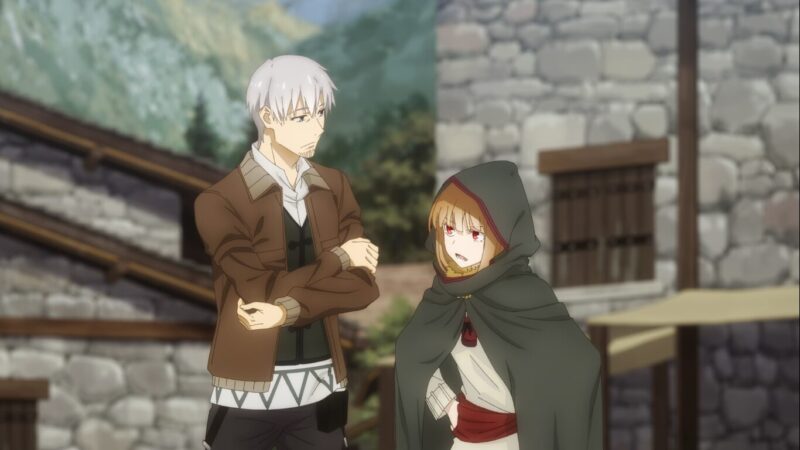
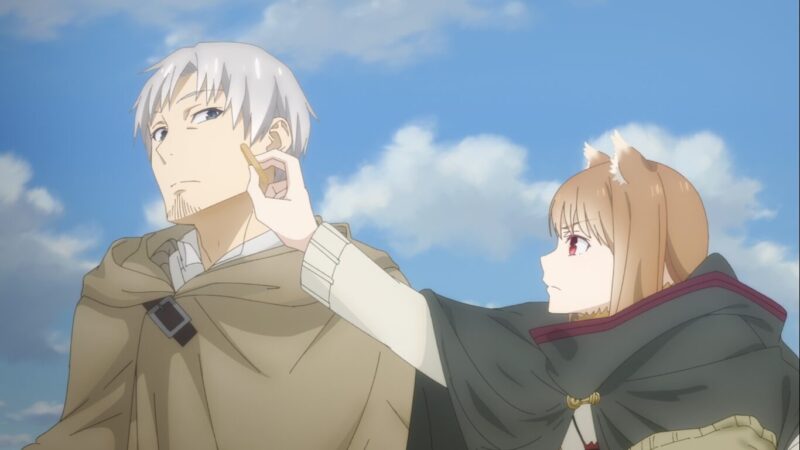
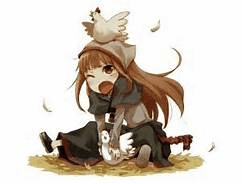
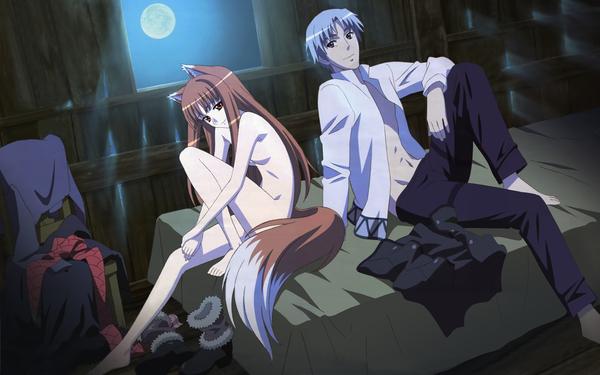
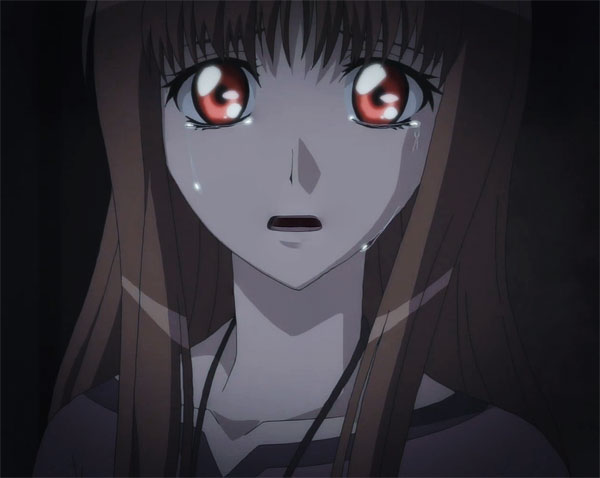
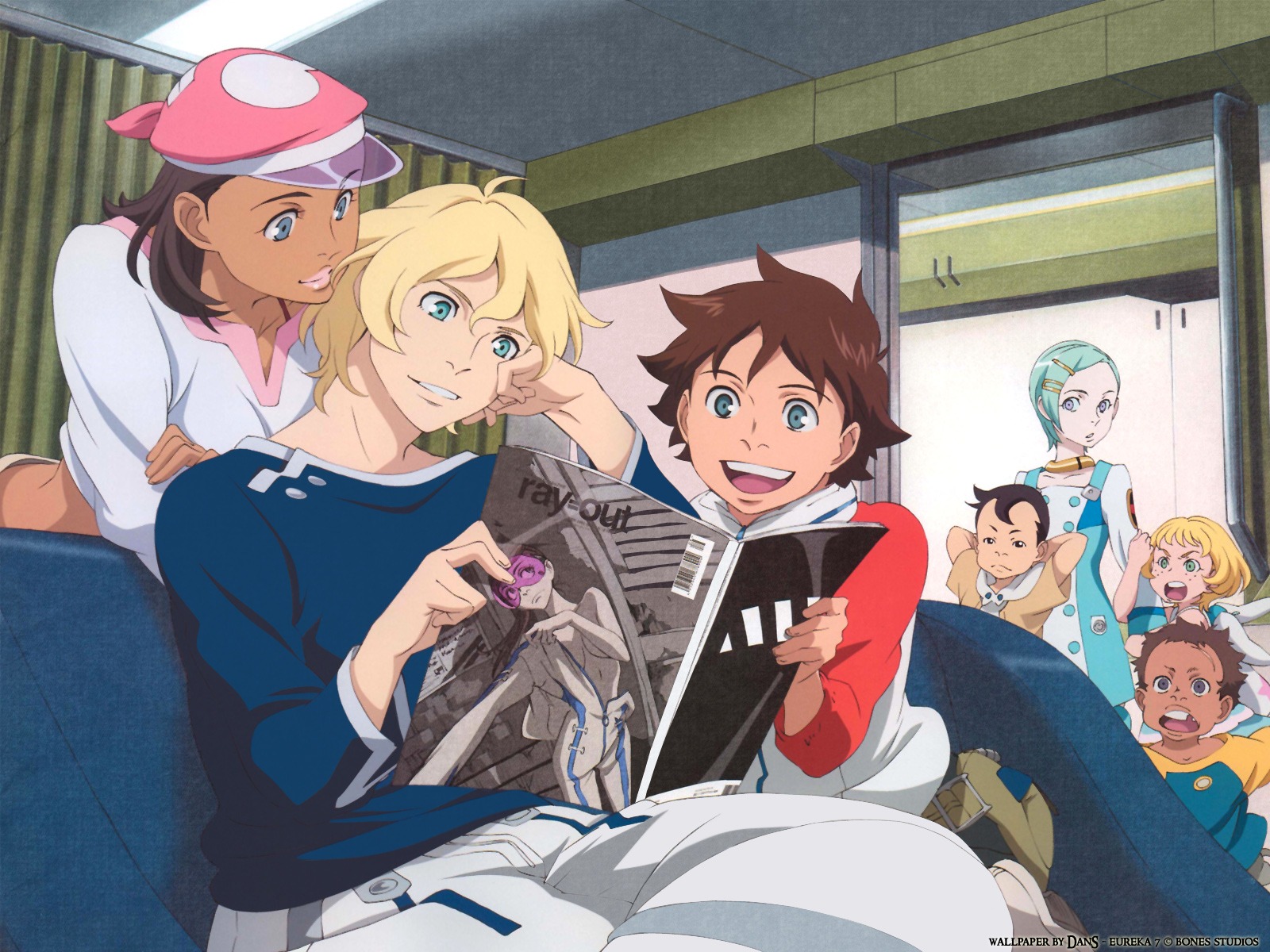
Good review of a good anime. I was surprised how much I loved this version. The older one will always have a special place in my heart, though. Like the previous commenter said, you picked up on a lot of nuance and I appreciate that. I especially like that you mentioned the conflict in this story around the Church and Pagan gods.
I enjoy how Spice and Wolf, the anime and the novels, leaves the larger geopolitical dynamics in the background. They matter, but they aren’t usually much more than a mention or a detail. It’s a realistic take on how geopolitics affects people, and how they consciously and unconsciously move within the environment shaped by those dynamics.
I only this year discovered the series through many conversations on Reddit, and I’m so glad I did.
I love your article and the points you make. You are spot on about the nuances you list, like the significance of Holo’s nudity, the lack of the fanservice gaze (which is an aptly-named term), and the two protagonists’ repartee, which is absolutely what I love about the show. I also like how you pointed out that unlike most male fantasy tropes, both characters are presented as equals from the start.
Oh, and I absolutely love Holo’s English VA; I was deeply impressed by her personification of the character as having a strong sense of pride – even too much at times perhaps – and her haughty inflection comes off as perfectly in-character and not affectatious.
Spice and Wolf stands as one of the jewels of anime. It’s not perfect, but it has a unique premise and great characters. It provides an alternative for all the action-oriented, teenage stuff that dominates the medium.